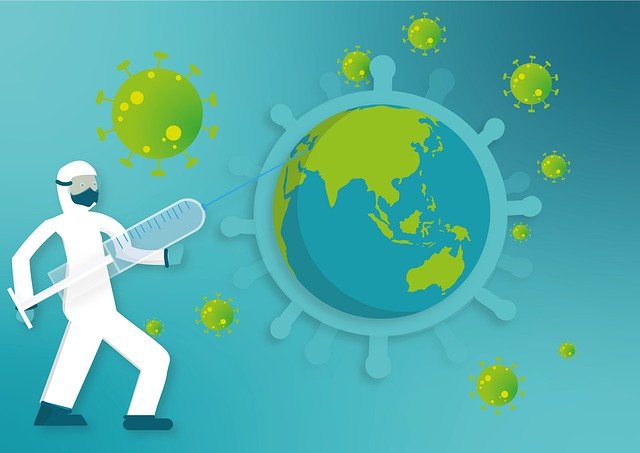Immunization is one of the most cost-effective public health interventions and largely responsible for the reduction of the mortality rate.
Covid-19 of which we don’t have any treatments as yet and it continues to be a disease that we really don’t understand the full manifestation.
Coming up with a vaccine to halt Covid-19 in a matter of months isn’t the only challenge. The next big test is getting billions of doses to every corner of the world at a time when countries increasingly are putting their own interests first.
Today, India is a leading producer and exporter of vaccines, still, the country is home to one-third of the world’s unimmunized children. There are a number of reasons why India lags behind in this which include huge population, geographical diversity, lack of awareness regarding vaccination, inadequate delivery of health services, lack of micro-planning, etc.
- Vaccination From Smallpox to Covid-19
Vaccines are one of the scientific breakthroughs that can boast of having saved the most lives throughout history.
When English physician, Edward Jenner, began experimenting with a smallpox vaccine some 530 million lives have been saved from smallpox since 1796.
Smallpox was a devastating disease. On average, 3 out of every 10 people who got it died. Those who survived were usually left with scars, which were sometimes severe.
#OnThisDay 40 years ago, #smallpox was made history.
It's the only human disease to be eradicated so far.
A lesson we must take is: when the 🌍 unites behind science and public health measures we can defeat diseases and protect lives and livelihoods. pic.twitter.com/9GgNwtI0wg
— World Health Organization (WHO) (@WHO) May 8, 2020
Jenner’s discovery paved the way for later vaccination programs—especially crucial since there is no effective treatment for smallpox.
According to data from the World Health Organization (WHO), today there are vaccinations available for a total of 26 diseases while its Product Development for Vaccines Advisory Committee (PDVAC) is overseeing another 24 that are still under development.
Vaccine-preventable diseases include:
Cervical cancer
Cholera
Diphtheria
Ebola
Hep B
Influenza
Japanese encephalitis
Measles
Meningitis
Mumps
Pertussis
Pneumonia
Polio
Rabies
Rotavirus
Rubella
Tetanus
Typhoid
Varicella
Yellow Fever
Yes, #VaccinesWork!pic.twitter.com/vMevI5tiSQ— World Health Organization (WHO) (@WHO) October 17, 2020
The science of vaccine development — vaccinology — thus has considerable scope for ongoing developments and a lot of challenges ahead, beginning with the Covid-19 pandemic, which was unleashed by the SARS-CoV-2 virus.
Smallpox, the first disease to be globally conquered, was declared officially eradicated in 1980.
- History of vaccines and the most promising mechanisms for developing new vaccination technologies
Traditional vaccines operating approach is based on Jenner’s reasoning i.e to inoculate an inactive pathogen, tempering or neutralizing the toxins in order to “wake the immune system up” thereby creating antibodies.
Many vaccinations that we receive today follow this logic, and for some infections, like HIV, have still not been discovered. It has been around four decades now since the outbreak of the HIV/AIDS epidemic and we still not have an effective vaccine against the virus.
Today with the power of technology compared to traditional vaccination approaches, recombinant technology produces inoculation using only the part of the virus that protects us, thereby avoiding the risk of developing the full-blown disease.
The first human vaccine developed according to this method was for hepatitis B, which was made publicly available in 1986.
It proved to be as effective as the traditional version and more than 95 percent of the healthy people vaccinated by this are properly immunized.
- mRNA: A leading technology in the Covid vaccine race
Another technology with enormous vaccination potential involves the use of messenger RNA (mRNA) to instruct cells to produce ‘their own vaccine’. ”This is basically a vaccine technology that’s based on the genetic sequence of the virus, so that did make it in some ways easier to get started,” says Chris Beyrer, a professor of epidemiology at the Johns Hopkins Bloomberg School of Public Health.
Like other vaccines, mRNA vaccines work by training the immune system to recognize a threat like a virus and begin producing antibodies to protect it.
🧫🔬🧪 mRNA #vaccines are a unique #technology and can be produced more rapidly than conventional vaccines.
Learn more about how Pfizer is developing a potential mRNA vaccine to help prevent #COVID19. pic.twitter.com/wr9Sf34aTv
— Pfizer Inc. (@pfizer) May 8, 2020
But while traditional vaccines often use inactivated doses of the organisms that cause disease, mRNA vaccines are designed to make the body produce those proteins itself.
Messenger RNA—a molecule that contains instructions for cells to make DNA—is injected into cells. In the case of Covid-19, mRNA vaccines provide instructions for cells to start producing the “spike” protein of the new coronavirus, the protein that helps the virus get into cells. On its own, the spike protein isn’t harmful. But it triggers the immune system to begin a defensive response.
While the Covid-19 continues to spread around the world, it has changed science, facilitating more than 1,700 clinical trials in record time.
Scientists and medical researchers are competing to discover the definitive treatment for this disease, while the world is awaiting seeking the definitive vaccination for the first pandemic of the 21st century.











